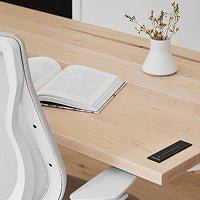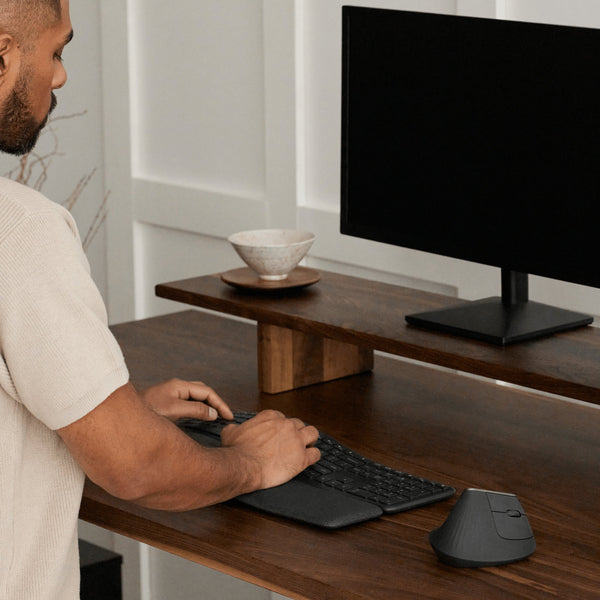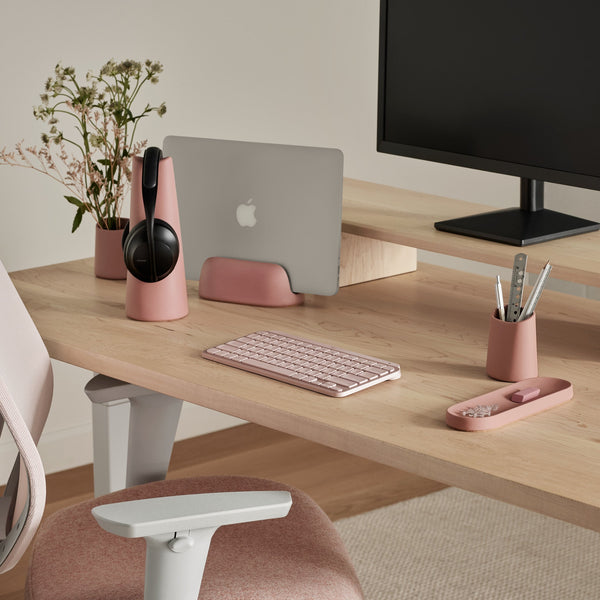Learning about good posture and which items you might need to create an ergonomic workspace can often be confusing.
Depending on your unique physiology, you might need a chair with more lumbar support, or perhaps your height requires a certain seat depth.
Lumbar support is often an overlooked and misunderstood aspect of chairs.
Let’s dive into everything you need to know about lumbar support.
Where is the Lumbar Region Located?
Before diving into everything you need to know about lumbar support and which chair might fit your body and needs, let’s talk anatomy.
The human spine consists of three sections: the cervical spine, the thoracic spine and finally, the lumbar spine. The Lumbar spine is located at the bottom of the spine or in the lower back. As you can imagine, this section of our spine is responsible for supporting a lot of our body’s weight and movements.
Beyond supporting the upper body, the lumbar spine has an array of essential functions, such as the ability for your torso to twist, protecting nerves along your spine and controlling the movements of your legs.
You can imagine the cascade of effects and discomfort that could arise from having lower back pain! Working with a good lumbar support is a must.
Don’t wait for the pain to creep in. Invest in your health and prevent back pain or other issues from arising by transforming your workspace.
Why Would You Need Lumbar Support?
We’re built to move. Our biomechanics positioning habits, repetitive motions, gravity and how we hold and process stress all help determine how we feel. Any static position held for an extended time will likely cause discomfort or exert pressure on various parts of our body.
Having a chair without lumbar support causes extra stress on the lumbosacral discs. This can have long-term effects on posture, joints, tissues and our spine.
Our bodies move and adapt to our environment. Many people experience lower back pain due to poor posture and prolonged use of maladapted equipment at work. Beyond a localized injury, lower back pain is often the cumulative result of many years without lumbar support. Suppose you spend 40 hours per week in a chair with zero lumbar support or in a position where you must slouch forward or tilt unnaturally. In that case, you might very well face issues such as lower back pain in the long run.
Every office chair should support the spine’s S-curve with lumbar support!
What are the Types of Lumbar Supports?
Office Chairs

Office chairs with lumbar support are popular amongst those seeking ergonomic workspaces. Ergonomic chairs with lumbar support will usually have height and depth-adjustable lumbar support.
This is an excellent option for those seeking customization based on their body and needs.
For more information, consult this article on how to choose the best ergonomic chair.
Dynamic Lumbar Support
Dynamic lumbar support aims at closely moulding and supporting your vertebrae and spine.
An elastomeric back mesh chair blends the perfect mix between support and flexibility while offering a dynamic lumbar support.
Instead of a rock-solid static backrest, dynamic lumbar support focuses on flexibility and mobility by opting for materials that move with you.
Pros:
- Superior support
- Adjusts to your body shape
- Limits overall stress on the body
- Higher cost
- Can be limiting for digital nomads or people who work in many environments
External Lumbar Pillow

Digital nomads love lumbar pillow accessories as they are easy to carry and can quickly level up any workstation.
Pros:
- Easily transferable from an office chair to the car, etc.
- Are sometimes inflatable, which allows further adjusting
- Can sometimes require a lot of readjustments as it is not fixed
- can sometimes only support a part of the spine instead of the whole spine
- Can be less effective
Towels or Coregeous Balls

To counter lumbar tension and upgrade your sitting experience, you can try placing a Coregeous Ball or Towel directly on your lumbar region.
Pros:
- Easily transferable from an office chair to the car, etc.
- Allows further adjusting based on needs
- Requires constant readjustment
- can sometimes only support a part of the spine instead of the whole spine
- Can be less effective
How to Adjust Your Lumbar Support?
Many options are available for lumbar support, but they will need adjustment based on your body and needs.
Let’s look at the main features you must remember when choosing an ergonomic chair with lumbar support.
Seat Height
Sitting properly starts with having both your feet flat on the floor. Ideally, your arms should be at 90 degrees on the table. The ideal height should allow you to rest your forearms comfortably with both elbows supported.
Seat Depth
Your seat should be wide and long enough to support the entire femur. You should have a 3 to four-inch distance between the end of the seat and the inside of your knees. Again, your knees should be at a 90-degree angle. Make sure you are comfortably seated on your sit bones and that your back is fully aligned with the backrest.
Lumbar Support
The ergonomic chair should provide support for the entire curve of your spine. You should also feel more support in your lower back area.
Posture
Ensure your monitors are at eye level to avoid unnecessary strain on your neck. Your keyboard should be an arm’s length away, allowing both elbows to be supported by the table.
An ergonomic mouse also allows for good wrist placement and prevents possible strains and injuries.
Ensure you aren’t hunched forward or that your chair is too far from your desk.
Lumbar Support: Adjustments
The YouToo Ergonomic chair allows you to manually adjust the level of lumbar support desired. With its revolutionary U-shaped back suspension, it offers stress-relief and unmatched support.
Adjust the depth of the back suspension to your comfort. A perfect position fills the gap naturally occurring in your lumbar spine without tilting your pelvis forward too drastically or pushing your lower back forward.
If you can’t afford an ergonomic chair, try sitting on the edge of your seat and supporting your back via abdominal engagement. You can also place a rolled towel on your lumbar spine for extra support.
5 Tips to Reduce Back Pain at Work
Even with the best lumbar support, prolonged static positions can lead to tension and back pain. Reduce the risk of back pain at work by incorporating movement in your day and taking many microbreaks.
Alternate Between Sitting and Standing
Opting for a standing desk is the best way to incorporate movement into your day. Harvard Health Publishing explains that standing while working may help reduce the risk of shoulder and back pain. Check out our detailed article on the benefits of standing desks!
Sit on the Floor
What if we need to rethink how we sit? Bestselling author, speaker, leader of the movement method and biomechanist Katyie Bowman suggests hitting the floor during your workday.
Here are some of her suggestions to add more variety and movement to sitting:
- Sitting forward toward the edge of the seat and hold your body upright without back support
- Cross one ankle over the opposite knee and then the other (adds a little stretch)
- Straddle your chair by placing it in reverse
- Bringing your feet up to chair level (mimics a squat movement)
Roll It Out
Understanding ergonomics is essential for officer workers. If you’re looking for exercises to counter your prolonged sitting periods or want to dive into tips and tricks to transform your space, Tune Up Fitness is the answer.
The Move, Breathe, and Roll Online classes include therapeutic approaches that address mobility, pain, strength and soft tissue recovery.
Walk It Out
Taking mini breaks and going for short walks throughout your workday is essential! Check out Biomechanist Katy Bowman’s 13 ways to make your walk more nutritious.
Get Professional Help
Finding an osteopath, kinesiologist, or sports therapist could be the support you’re missing to improve your posture and better understand your unique physiology and needs. Don’t wait for injuries to arise.
Up Next
- The Ultimate Guide for Dual Monitor Desk Setup
- 9 Benefits of a Standing Desk (and our Best Tips)






Leave a comment